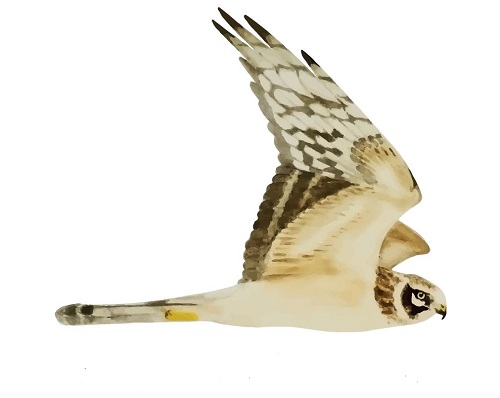Her på Skagen Fuglestations blog bringes korte nyheder i dagbogsformat om hændelser på fuglestationen.
Wader night catching at Cormorant Lake
Hey there!
As Hanelie already mentioned in her last blog, she could discover a good number of waders at Cormorant Lake! Therefore, we decided quite spontaneously to start a night catching experiment to ring some of them.
We packed all the stuff and left the house at around 11 PM. Packed with chest waders, ringing stuff and food for the night we started the walk to Cormorant Lake. The air was warm and wet, so it was an exhausting walk (which seemed to me never-ending). But we arrived, completely sweaty, tearing off our clothes.
After putting on our chest waders we fought ourselves through the reed to the lake. This was really adventurous as we sank into the mud and sometimes it felt like we were stuck.
Arriving at the lake we figured out where the waders are resting and where we should build up the nets. That’s the point where it started to get difficult for me. After a few minutes of walking through the lake, I recognized that my rubber boots and my chest waders must have some holes because my feet started to become wetter and wetter. So finally, the (brownish, marshy) water was up to my ankles which made me feel quite cold and uncomfortable.
It took as quite a while to figure out where to place the nets for the best output. We also put out speakers with wader sounds to attract the birds. But already while doing this Frank managed to catch a common redshank (Rødben) with his hands and a snipe (Doppeltbekkasin) and another common redshank (Rødben) were caught in the nets we had already built up.
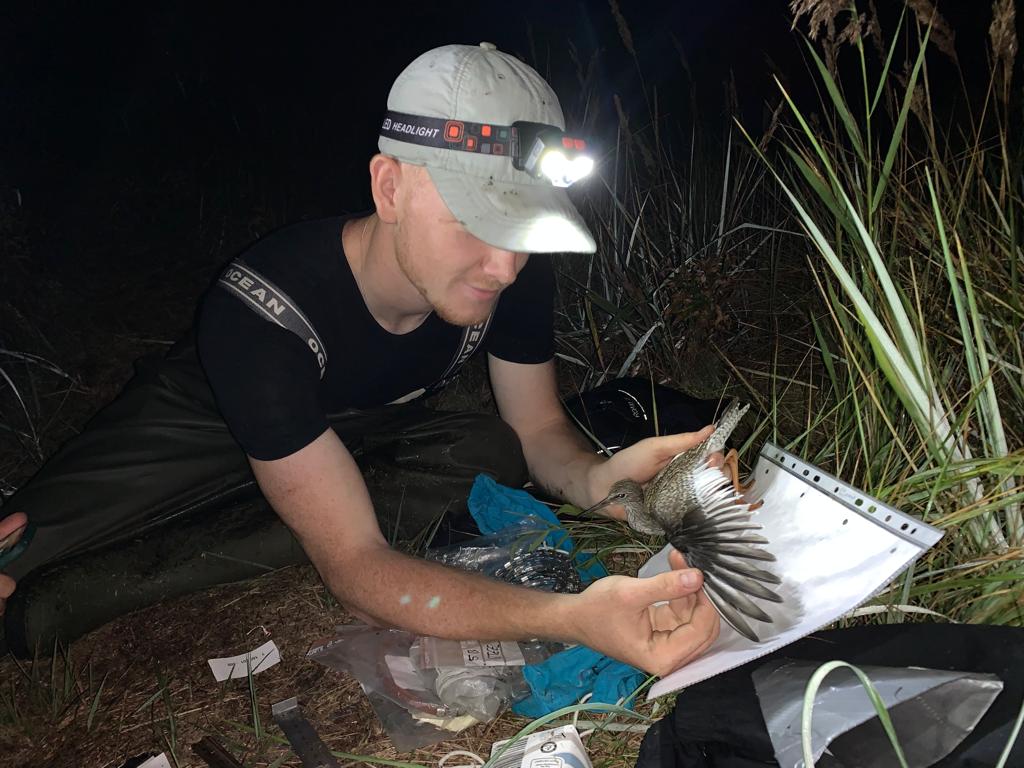
We were out there for more than one hour and before starting the first round we had to ring the already caught birds.
It was interesting to measure the waders as there are far bigger than the passerines and there is an additional measure: the length from the tip of the beak to the back of the head.
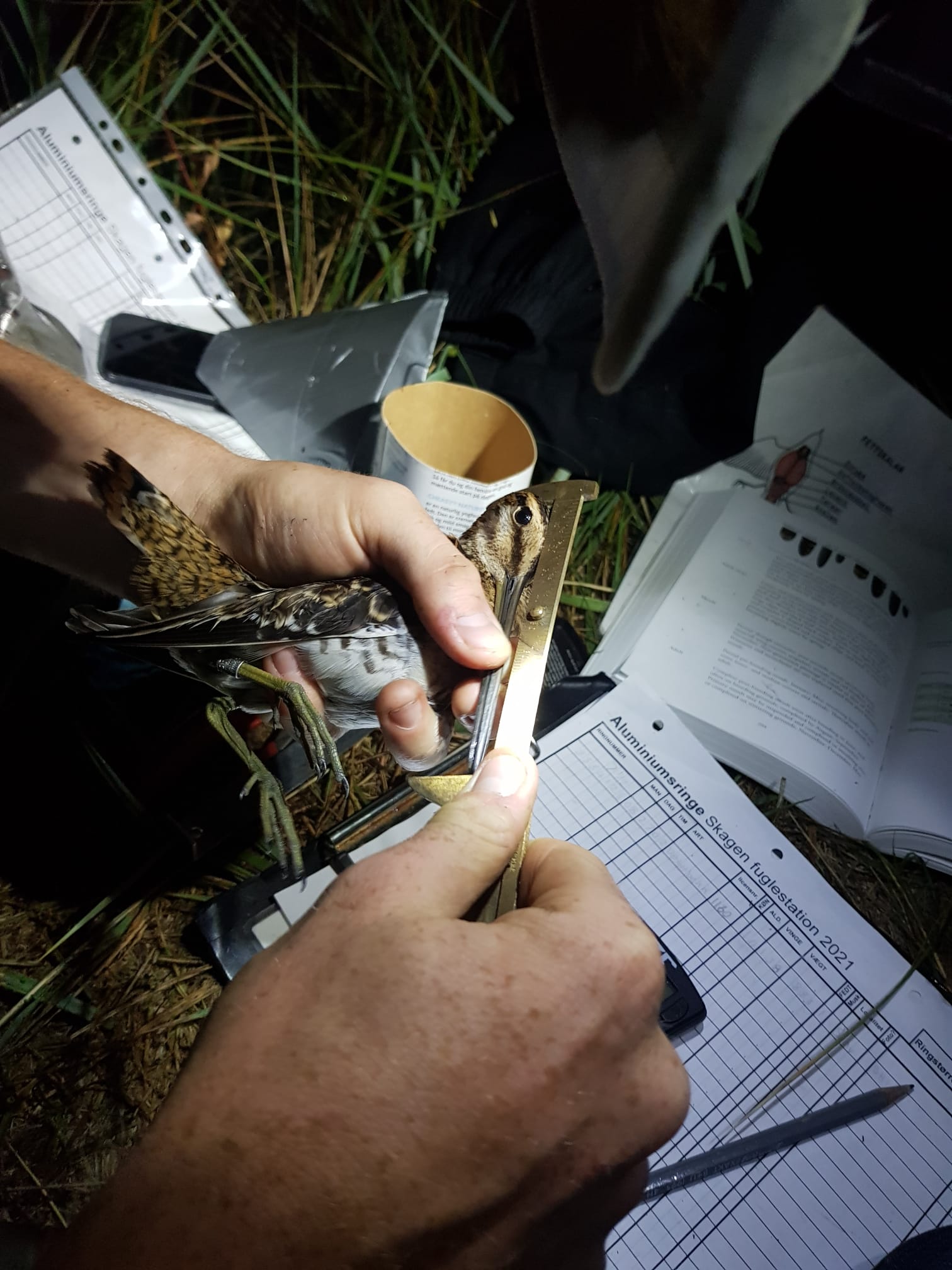
We started with our regular rounds at approximately half past one. However, they took quite a while as we also tried to flush the birds to make them flying towards our nets.
The effort was worth it: all in all, we caught 12 birds.
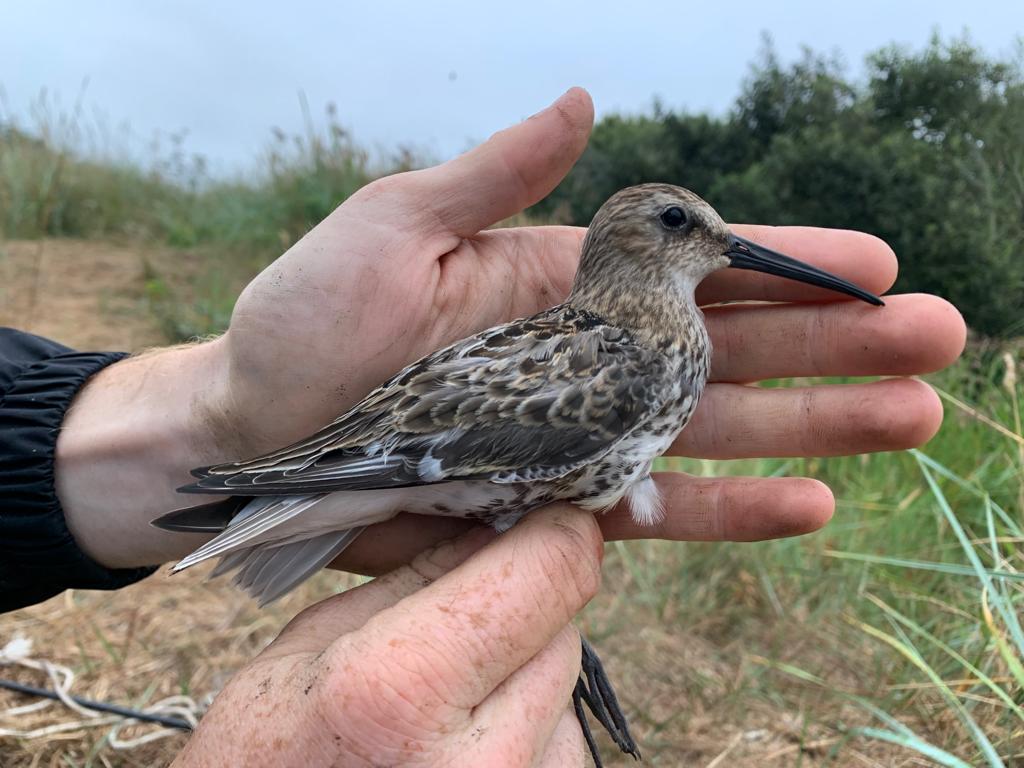
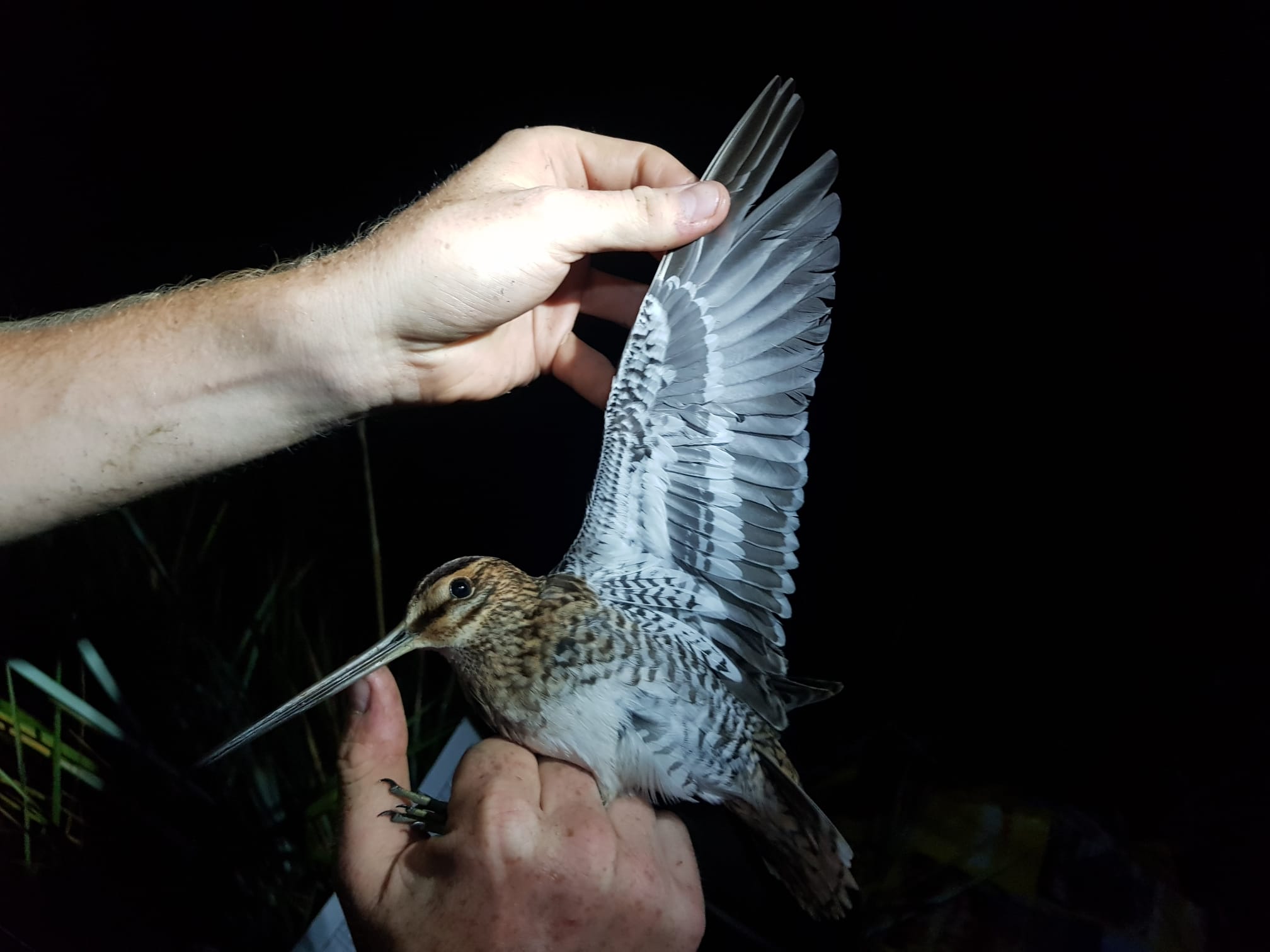
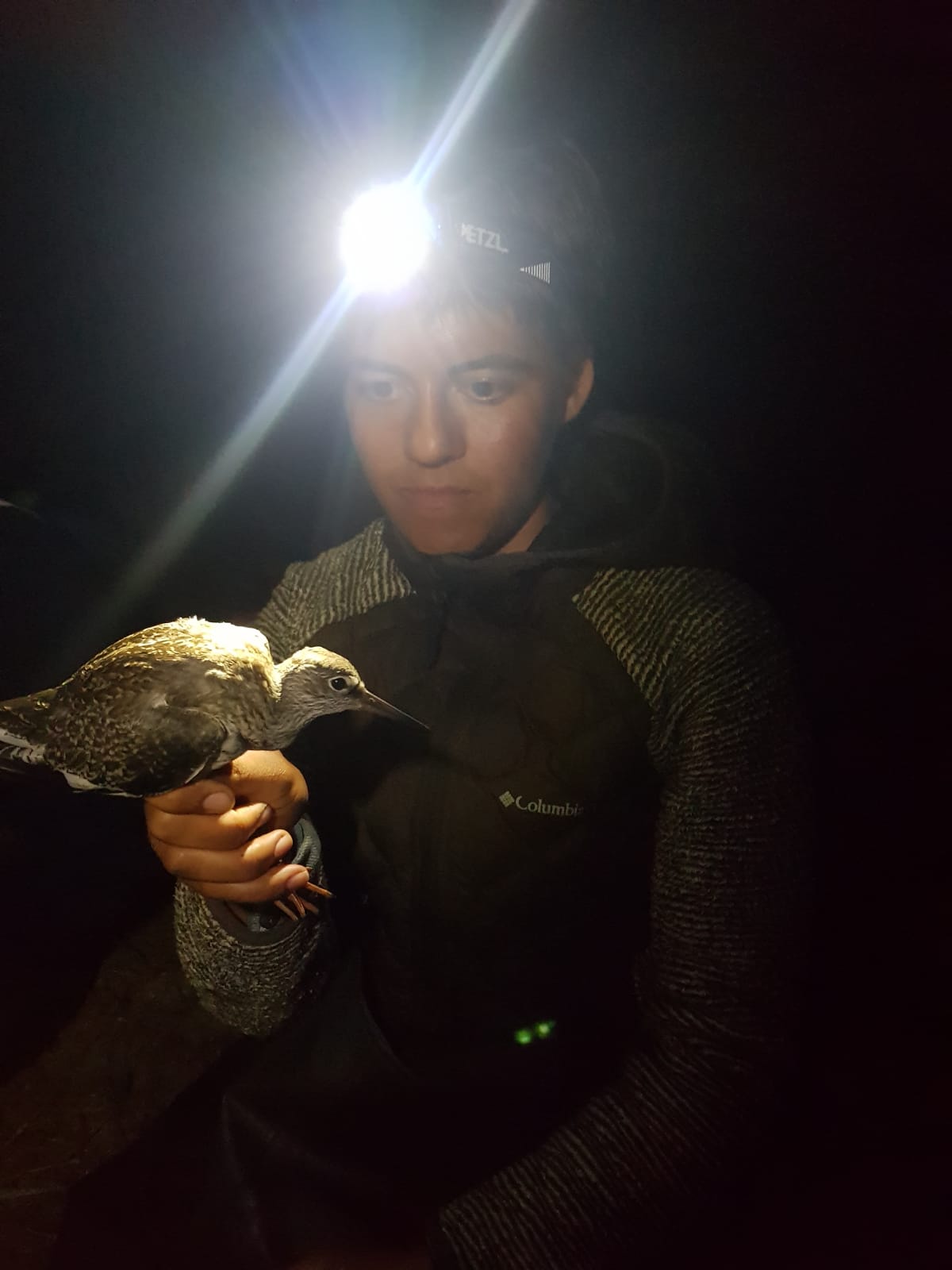
We made four rounds and closed at around 7:30 AM. I wasn’t joining the last two rounds as I was really wet, cold and exhausted. However, observing the others walking through the lake from the shore was a quite spectacular view, which made me laugh quite often. Especially, when Max jumped after a snipe (Doppeltbekkasin), spitting out the marshy water.
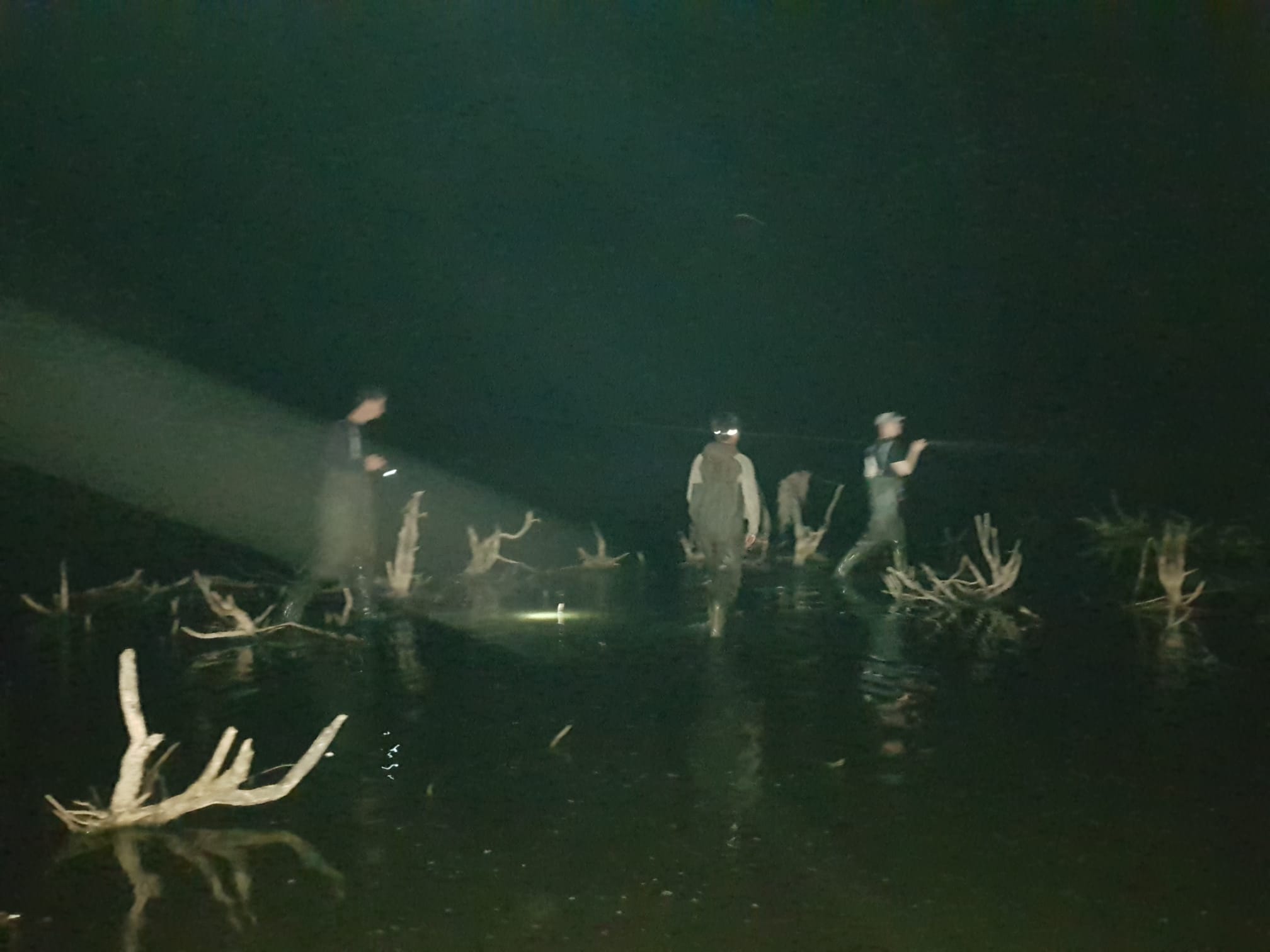
We came back at around 9 AM and slept the whole next day. In the evening the others took the train to Aalborg to catch some Great Snipes (Tredaekker). Unfortunately, I was too exhausted to join after last night catching session. See in the next blog if and how they succeeded!
The wader catching at Cormorant Lake was worth it for sure and we probably would have caught some more birds if we already had known where to place the nets. It is very likely that we will repeat this in the next couple of days. So, stay tuned.
Ringing (Skarvsøen):
8 Snipes (Doppeltbekkasin)
3 Common Red Shanks (Rødben)
1 Dunlin (Almindelig Ryle)
Total: 12
Observations of the day in DOFBasen from observers in the area
People: Max Laubstein, Frank Osterberg, Hanelie Sidhu, Elena Turac, Simon Christiansen.
